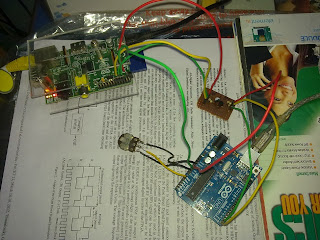Online Electronic Shops in India
Electronics hobbyists are always in need of new parts , boards, components for their Do iT Yourself (DIY) projects. The industry is overwhelmed with various vendors, products,models etc:- Sometimes we find extremely difficult to purchase an exact part number of a product here in india. So hereby its an effort to list out some of the electronics shop websites i found useful. Most of them are very simple to use and provide good service. Payment methods vary from Online Cash payment to COD. Many websites provide free shipping if total purchase is greater than a particular amount (500 INR mostly). So it is good to check with all of them. Below is the list.. Will be updated as per i come across some new shops.. http://in.element14.com/ http://kitsnspares.com/ http://www.rhydolabz.com/ http://www.9circuits.com/ http://www.probots.co.in/ http://www.embeddedmarket.com/ http://www.hobby2go.com/ http://www.electroncomponents.co...
